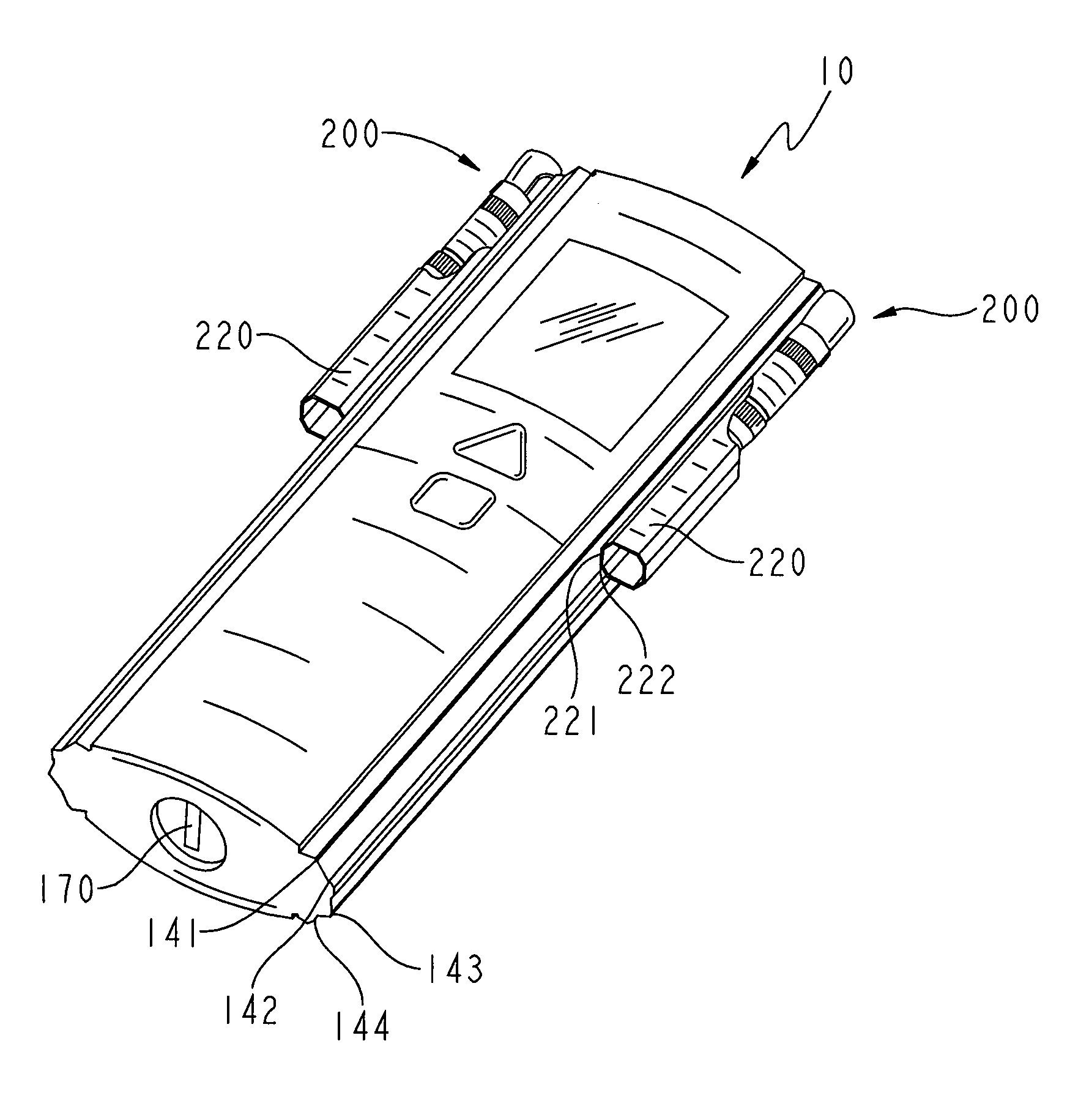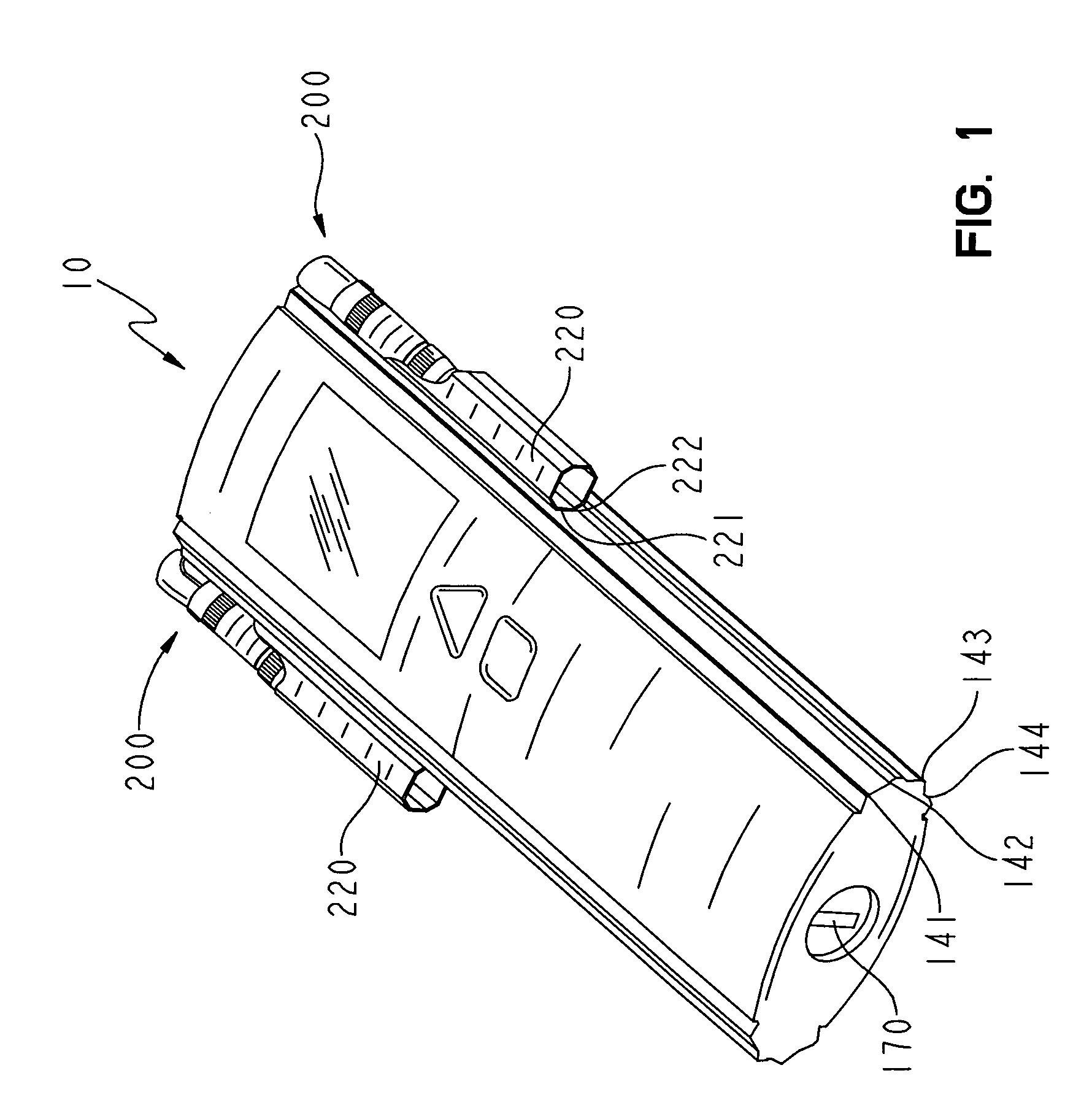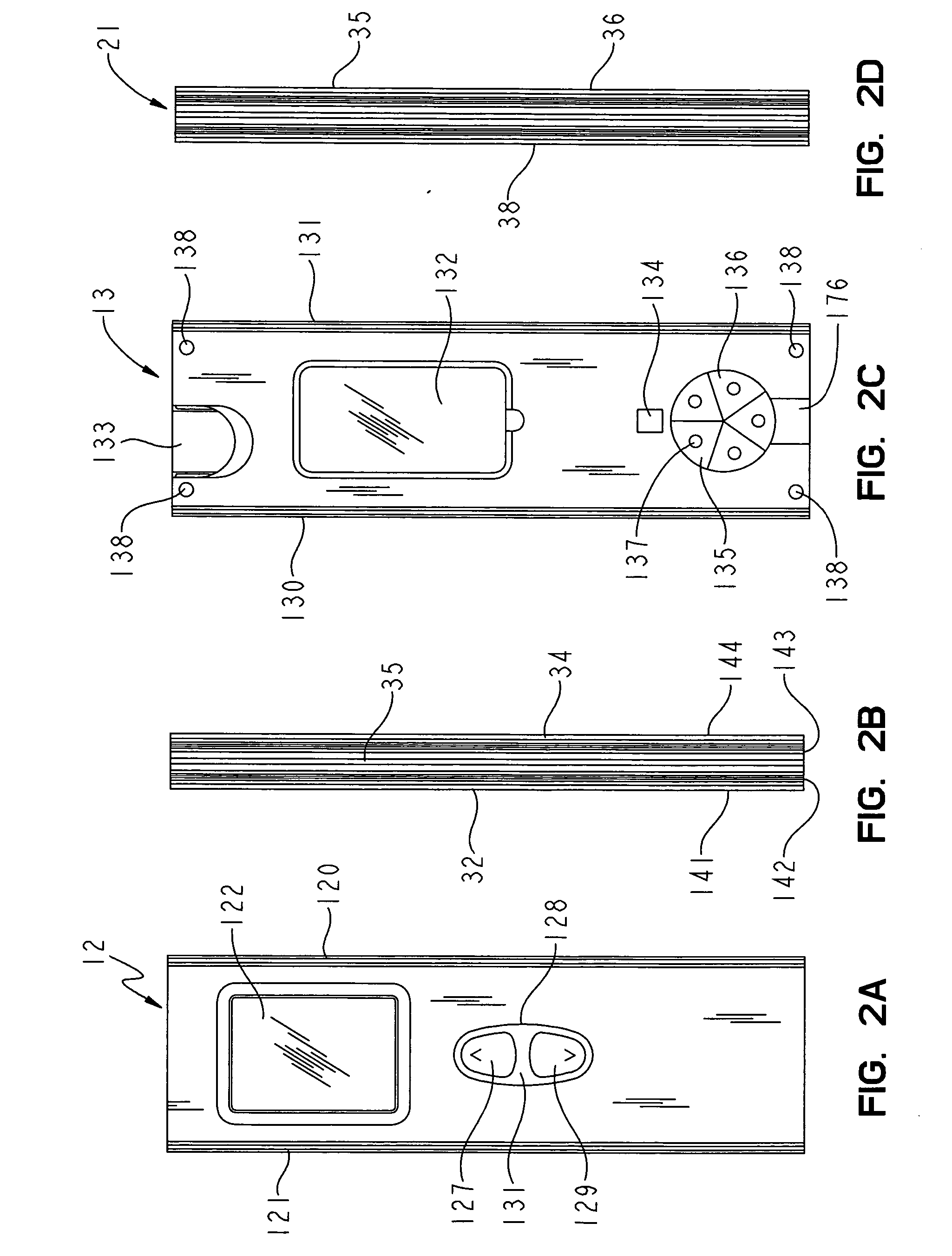Methods and apparatus for analyzing an analysis fluid
a technology of analysis fluid and analysis method, which is applied in the field of methods and apparatus for analyzing an analysis fluid, can solve the problems of limited features of consumers and users, limited current system design, and limited use of glucose measurement, so as to reduce the surface area of the chemistry matrix, reduce the need for test field surface and blood volume, and achieve the effect of simple transmittance measuremen
- Summary
- Abstract
- Description
- Claims
- Application Information
AI Technical Summary
Benefits of technology
Problems solved by technology
Method used
Image
Examples
second embodiment
[0064] The meter 10 also includes a display 122 for the display of information, and one or more buttons to control the meter 10 and the display of information on the display 122. FIG. 3B shows one embodiment of the meter 10 with two buttons, an upper triangular button 124 to scroll through information displayed on the display 122, and a lower square button 126 to select displayed information for the control of meter functions. FIG. 2A shows the meter 10 with an elongated toggle button 128 to control meter functions. The toggle button 128 includes an upper portion 127 and a lower portion 129 to scroll up or down, respectively, through the information displayed on the display 122, and a central portion 125 that can be depressed to select the desired item displayed on the display 122.
[0065] The case back 13, best shown in FIG. 2C, includes a battery cover 132, a code chip slot 133, a light pipe opening 134, a color chart 136, a visual back-up test wand opening 176, and rubber feet 138....
first embodiment
[0078] The first embodiment to be described for cooperative processing of a blood sample by the meter 10 and the consolidated test wand 200 is the panel separation method shown in FIGS. 5-10 and 19.
[0079] The test strip 204 used in the panel separation method includes an upper panel 205; a lower panel 203; a left side spacer 207 and a right side spacer 209. The upper and lower panels 205, 203 are hingedly attached at the proximal end 240 of the test strip 204 and are preferably made of transparent plastic. The upper and lower panels 203, 205 can be attached by various methods known in the art, including, for example, double stick tape or ultrasonic welding. The left and right side spacers 207, 209 separate the upper and lower panels 205, 203 creating a channel 201. FIG. 9 shows an exemplary, but out of proportion cross-section of the distal end 242 of the test strip 204 showing the channel 201. The channel 201 is surrounded on the left and right by the left and right side spacers 20...
PUM
| Property | Measurement | Unit |
|---|---|---|
| volume | aaaaa | aaaaa |
| diameter | aaaaa | aaaaa |
| diameter | aaaaa | aaaaa |
Abstract
Description
Claims
Application Information
 Login to View More
Login to View More - R&D
- Intellectual Property
- Life Sciences
- Materials
- Tech Scout
- Unparalleled Data Quality
- Higher Quality Content
- 60% Fewer Hallucinations
Browse by: Latest US Patents, China's latest patents, Technical Efficacy Thesaurus, Application Domain, Technology Topic, Popular Technical Reports.
© 2025 PatSnap. All rights reserved.Legal|Privacy policy|Modern Slavery Act Transparency Statement|Sitemap|About US| Contact US: help@patsnap.com



